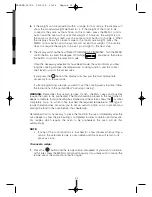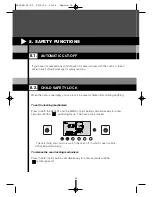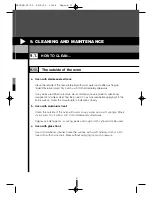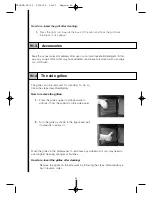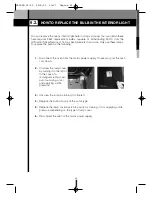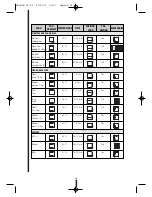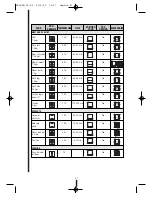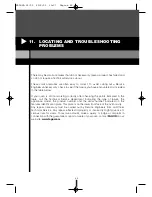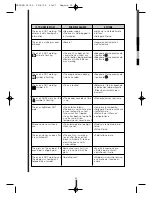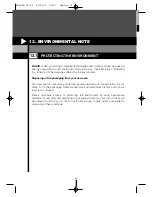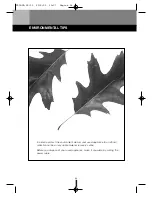
43
•
Always use the cooking tables in this manual as a base for programming the
oven. To cook one of your own recipes, find a similar dish in the table as an aid
to choosing the most suitable function, temperature and cooking time.
•
Cooking times indicated in the tables are approximate, and if the food is taken
straight from the fridge to the oven, a longer cooking time will be required. Times
also depend on taste, i.e. on how “well-done” you like your food.
•
Large pieces will also require more time. The tables are worked out based on
amounts for about four people.
•
Use the temperatures given in the tables. A higher temperature than that given
may generate excessive smoke and steam.
•
If the food does not take up all the tray, place it in the centre.
•
After cooking meat and poultry, let the roast stand for 5 to 10 minutes inside the
oven.
•
Light coloured dishes are not suitable for baking or roasting, as they reflect the
heat.
•
To ensure that poultry browns nicely, baste it well with fat.
•
To check if a cake is done, stick a toothpick into the centre about 10 minutes
before cooking time is up. If it comes out clean, the cake is done.
•
If the cake or pastry is more done underneath than on top, cook it on a higher
shelf next time. Choose a slightly higher cooking temperature and leave it in the
oven for longer. If on the other hand it is more done on top than underneath, place
it on a lower level in the oven. Choose a slightly lower cooking temperature and
leave it in the oven for longer.
10. PRACTICAL ADVICE AND COOKING TABLE
PRACTICAL ADVICE FOR BAKING AND ROASTING
a
FEINGL.05/05 29/6/05 10:37 Página 43





